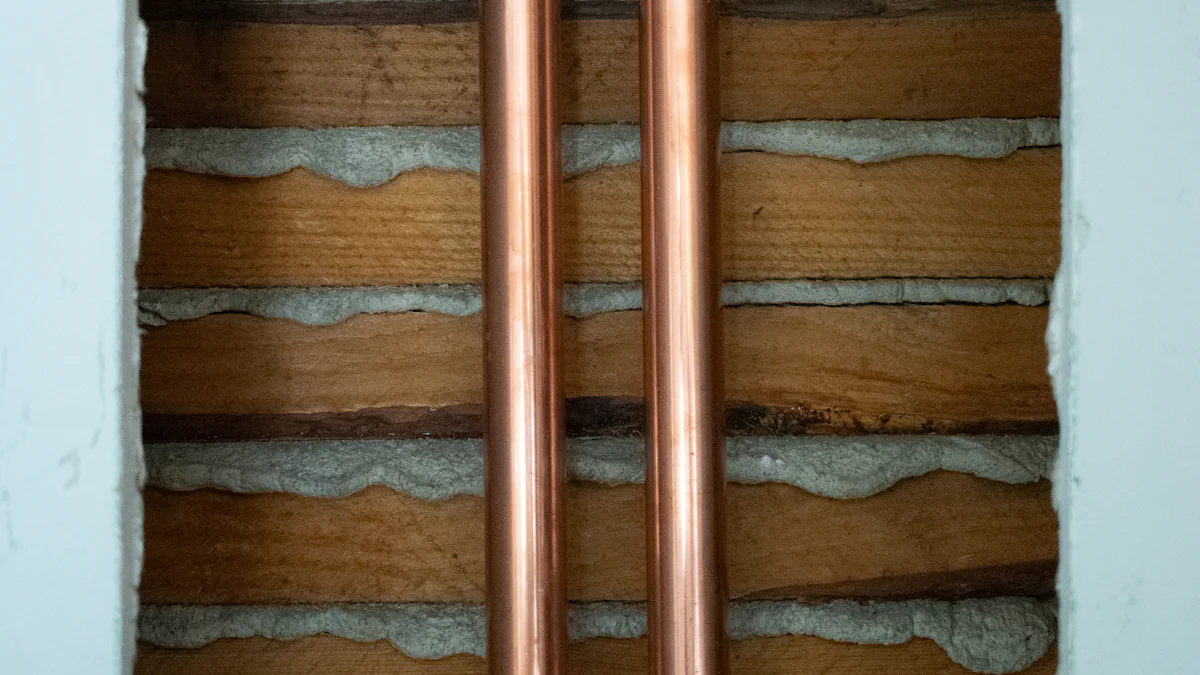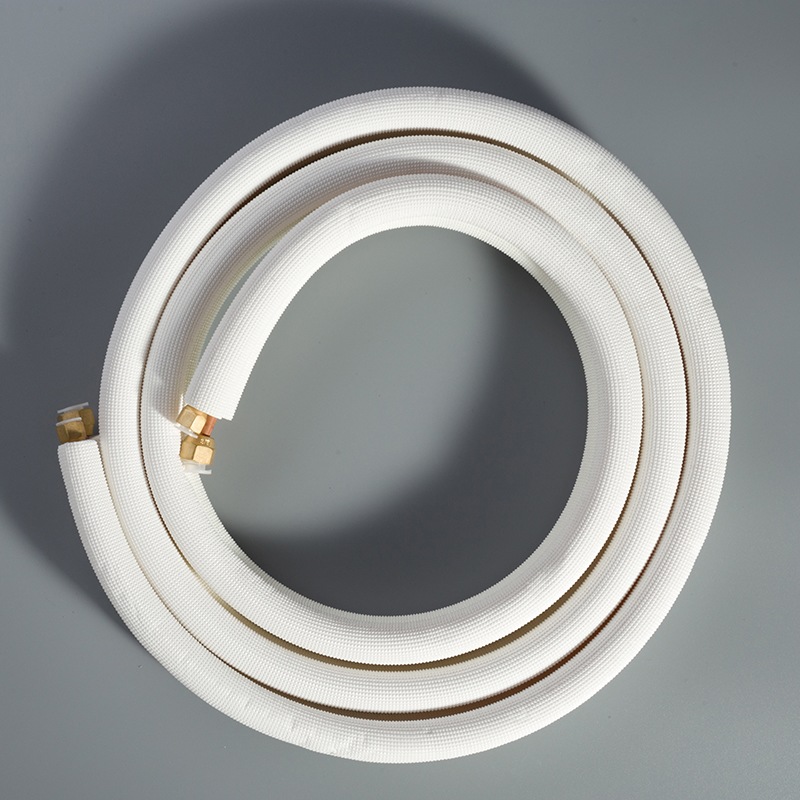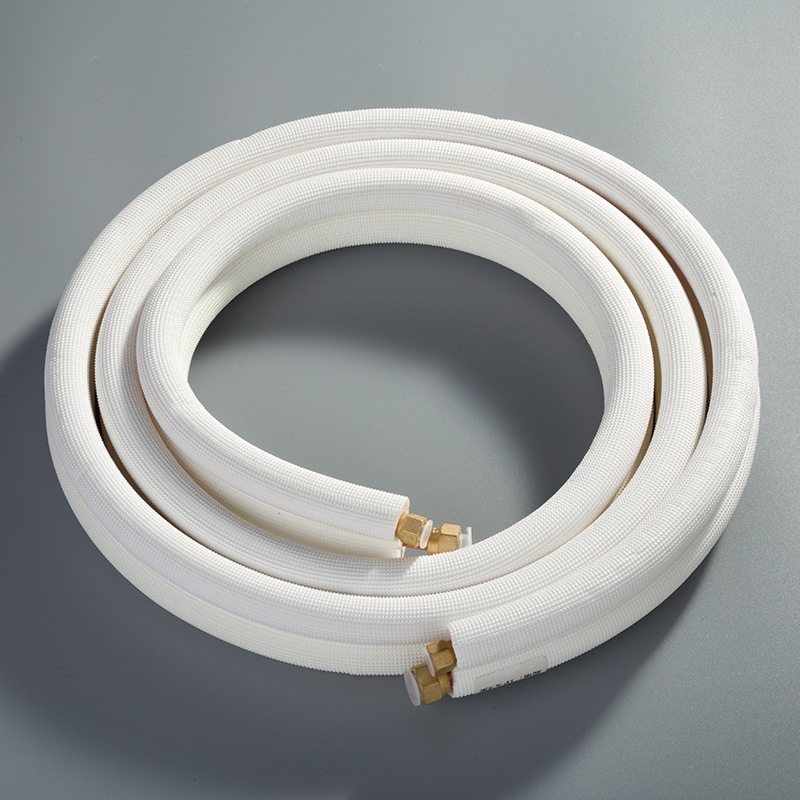Copper vs Aluminum Pipes: Which Is Better?

Selecting the appropriate piping material is crucial in various applications. This blog post will write a 'Comparison' on the 'Differences between copper and aluminum pipes'. Copper and aluminum are two commonly used materials in the industry. This blog aims to thoroughly compare and contrast these two materials, shedding light on their distinct properties and practical implications. By delving into the specifics of each material, readers can make informed decisions based on their unique requirements.
Material Properties

Copper Pipes
Physical Properties
Copper pipes exhibit excellent thermal conductivity, making them ideal for applications requiring efficient heat transfer. Their low specific heat quantity allows rapid dissipation of heat, enabling quick cooling to absorb more heat efficiently.
Chemical Properties
Copper is known for its exceptional corrosion resistance, ensuring longevity and durability in various environments. This property makes copper pipes a reliable choice for applications where exposure to moisture or chemicals is a concern.
Aluminum Pipes
Physical Properties
Aluminum pipes have a higher specific heat quantity than copper, resulting in slower heating and cooling processes. This characteristic leads to increased energy consumption and reduced cooling effectiveness compared to copper pipes.
Chemical Properties
One drawback of aluminum pipes is their susceptibility to corrosion, especially in acidic or alkaline environments. This factor necessitates proper maintenance and protective measures to enhance the longevity of aluminum piping systems.
Installation and Maintenance
Copper Pipes
Installation Process
Begin the installation of copper pipes by carefully measuring and cutting the tubing to the required lengths.
Clean the pipe ends thoroughly to remove any debris or contaminants that could affect the sealing process.
Utilize a specialized tool to flare the pipe ends, ensuring a secure connection that minimizes the risk of leaks.
Connect the pipes using soldering techniques, creating strong joints that can withstand pressure variations.
Maintenance Requirements
Regularly inspect copper pipes for signs of corrosion or damage, especially in areas exposed to moisture or harsh chemicals.
Implement a preventive maintenance schedule to check for leaks and address any issues promptly to prevent extensive damage.
Use appropriate cleaning solutions and tools to remove mineral deposits and maintain optimal water flow through the pipes.
Consider applying protective coatings or wraps in corrosive environments to extend the lifespan of copper piping systems.
Aluminum Pipes
Installation Process
When installing aluminum pipes, ensure proper support and alignment to prevent stress on the tubing during operation.
Use compatible fittings and connectors designed for aluminum piping systems to maintain structural integrity.
Secure connections with recommended fastening methods, such as crimping or welding, for leak-free installations.
Conduct pressure tests after installation to verify system integrity and identify any potential leaks.
Maintenance Requirements
Inspect aluminum pipes regularly for signs of corrosion, particularly in areas exposed to high humidity or chemical vapors.
Clean the exterior surface of aluminum tubing using non-abrasive materials to prevent scratches that could lead to corrosion initiation.
Apply protective coatings or paints suitable for aluminum surfaces to enhance resistance against environmental factors.
Monitor system pressure and temperature levels periodically to detect anomalies that may indicate underlying maintenance issues.
Cost Analysis
Initial Costs
Aluminum Pipes
Aluminum pipes are known for their affordability compared to other materials like copper.
The material costs for aluminum pipe systems are about the same or even lower than copper pipes.
When considering initial expenses, aluminum piping emerges as a cost-effective option for various applications.
Copper Pipes
Copper pipes stand out for their durability and superior quality, but they come at a higher price point.
Material costs for copper pipe systems are considerably more expensive than steel or aluminum alternatives.
Despite the higher initial investment, copper piping is valued for its longevity and reliability in diverse environments.
Long-term Costs
Aluminum Pipes
Over time, the maintenance and replacement costs of aluminum pipes may be lower due to their resilience to corrosion.
While initial expenses are favorable, it's essential to consider long-term durability when opting for aluminum piping solutions.
The long-term cost-effectiveness of aluminum pipe systems makes them a practical choice for projects with extended lifespans.
Copper Pipes
Although the upfront costs of copper pipes are significant, their longevity and minimal maintenance requirements contribute to cost savings over time.
The durability and resistance to corrosion of copper piping justify the initial investment by ensuring prolonged service life.
When evaluating long-term benefits, the reliability and performance of copper pipe systems make them a valuable asset in various applications.
Applications and Suitability

Residential Use
Copper Pipes
Copper pipes are commonly favored in residential settings for their durability and reliability in plumbing systems.
The superior thermal conductivity of copper ensures efficient heat transfer, making it ideal for hot water supply lines.
Due to its corrosion resistance and longevity, copper piping is a preferred choice for residential plumbing projects.
Aluminum Pipes
In residential applications, aluminum pipes offer cost-effective solutions for water distribution systems.
Despite lower heat conductivity than copper, aluminum tubing provides adequate performance for standard household needs.
The affordability and ease of installation make aluminum piping a practical option for residential plumbing projects.
Commercial and Industrial Use
Copper Pipes
Copper pipes are widely utilized in commercial and industrial settings due to their robust nature and high-pressure handling capabilities.
The thermal efficiency of copper tubing makes it suitable for HVAC systems and refrigeration units in large facilities.
With exceptional corrosion resistance, copper piping ensures long-term performance in demanding industrial environments.
Aluminum Pipes
In commercial and industrial applications, aluminum pipes offer lightweight alternatives for air distribution systems.
Despite lower thermal conductivity compared to copper, aluminum tubing provides cost-effective solutions for medium-pressure applications.
The ease of installation and flexibility of aluminum piping make it a convenient choice for various industrial projects.
Copper is more durable and less prone to corrosion than aluminum, making it a solid choice for long-term reliability.
Aluminum piping offers cost-effective solutions for compressed air systems, especially in terms of reduced costs and increased longevity.
Copper-tubed coils are superior to aluminum-tubed coils due to their efficiency, ease of maintenance, and extended lifespan.
When considering aircon installations, the industry recognizes aluminum as a better alternative to copper.
In the long run, copper's strength and durability make it a more cost-effective option compared to other materials.
See Also
Insights on Why Copper Pipes Outperform PVC Environmentally
Benefits of Selecting Copper Pipes for Air Conditioning
Exploring Efficiency: Copper vs. Aluminum Tubing in Aircon
The Importance of Pure Copper Pipes for Effective Air Conditioning
Key Advantages of Copper Pipes in Transforming Air Conditioning


